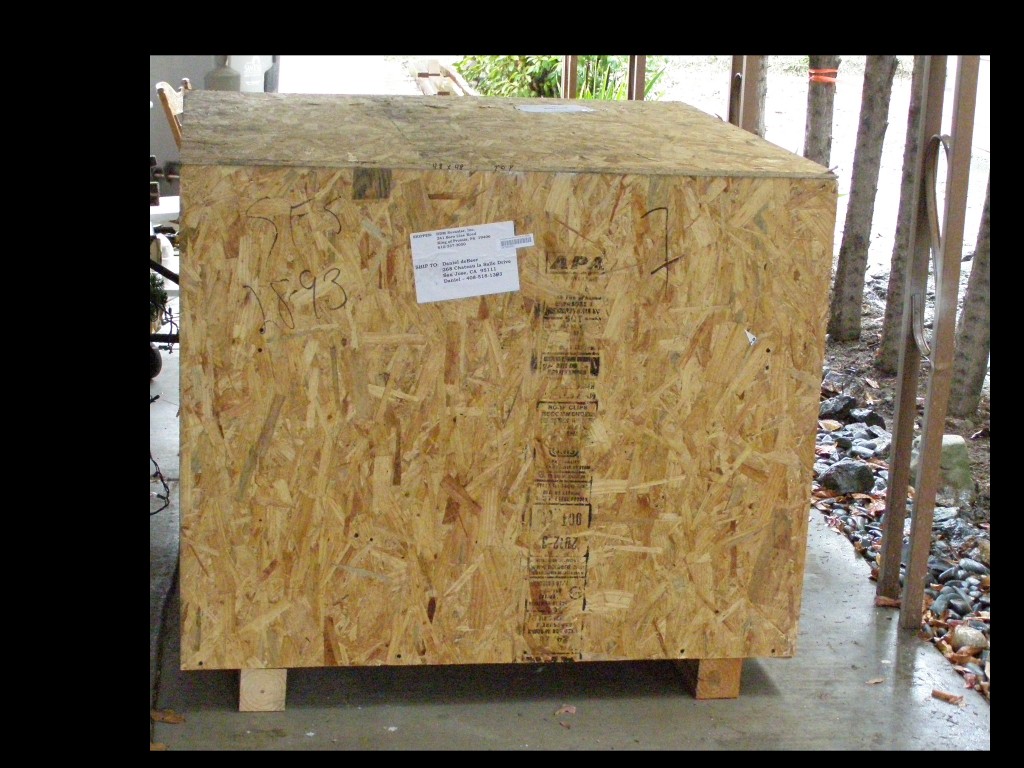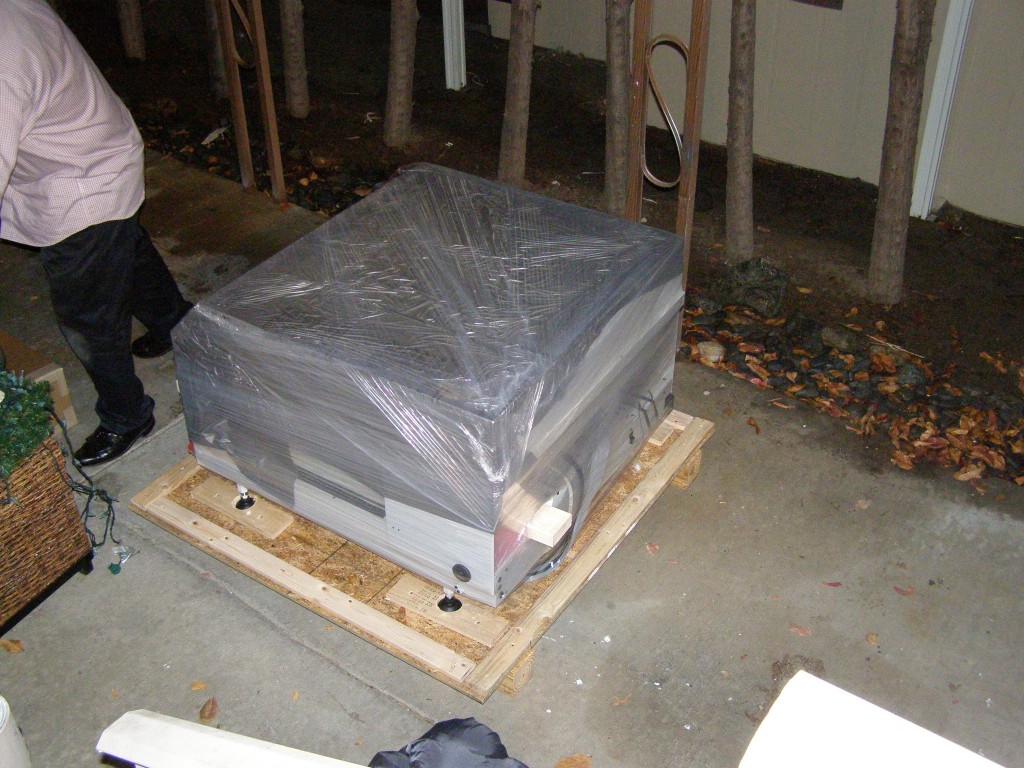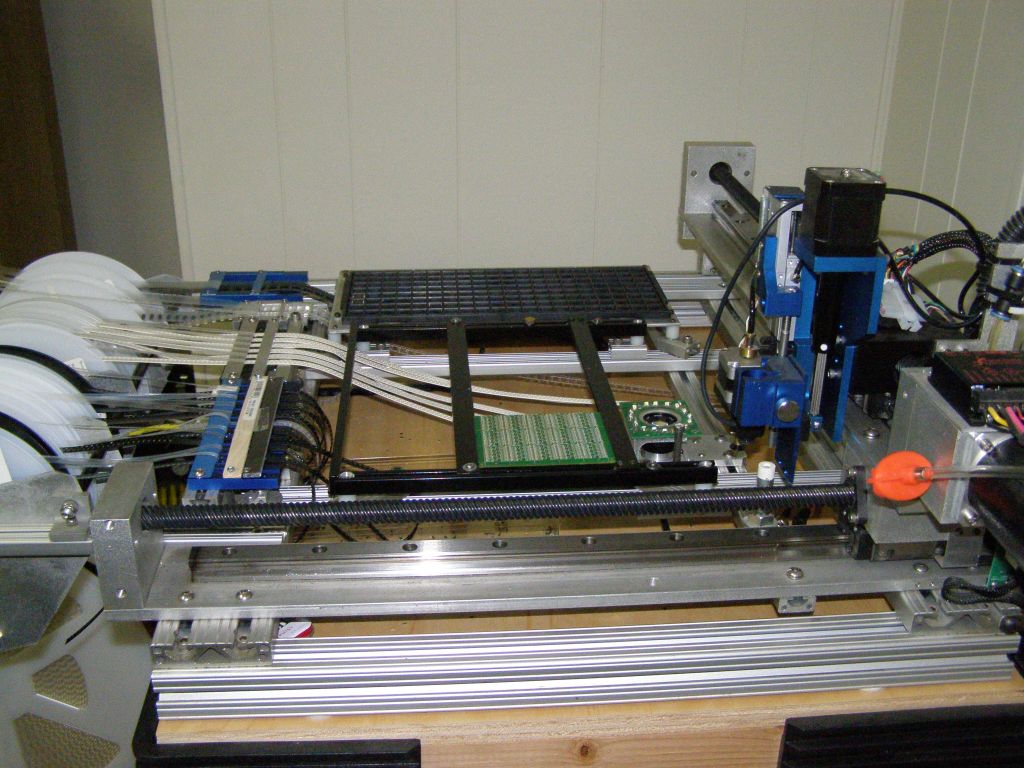The LE40V arrived yesterday (Dec 18). The pick and place machine arrived as promised in a gigantic crate with the feeders, PC and the machine professionally packed. I was surprised when the truck arrived with just a driver, no helpers. The driver maneuvered the truck under a carport and single handedly offloaded the crate with just a hand operated forklift and the lift gate of the truck. It was raining pretty heavily and it was cold so the crate was left unopened and we waited for the rain to stop. It was around five o’clock when the rain finally let up enough so we thought we could unpack it and get it indoors. The container is constructed as a wooden box that can be lifted with a forklift. It has a million screws. I took the lid off and it revealed a bunch of boxes on top of a wooden partition. The boxes contained the PC, monitor, feeders, bank feeders and some tools. We set all the boxes aside and removed another million screws. We removed all four side panels of the box and some cross beams holding the LE40V in place. In the manual it says that the machine is held onto the base by four bolts so we tried to locate the bolts. No luck. We tilted the pallet to look underneath. That sucker is HEAVY! and surprise! no bolts. We then thought that the feet is holding the machine in place and tried to remove them by unscrewing them. When we lifted the machine to take the weight off the feet, one foot came off. It left a rounded rubber piece that sits in the foot and the foot stuck to the pallet. New plan, lift the machine off the feet. That worked and we ended up with three feet attached to the machine and one stuck to the pallet. Next we carried the machine on top of the pallet closer to the work area and rested it on top of a sturdy box. Here two of us lifted the machine off the base of the pallet, two people removed the pallet and we carried it indoor and put it on top of its table. It couldn’t have been more than 10 yards but it is down a narrow passage and through a door that is just barely wide enough to get through. It felt like half a mile. That machine is heavy. The manual says 250lbs but I’m sure its more, it certainly feels like a lot more. The pallet and content weighed in at 600lbs (according to the waybill).
After maneuvering the machine to its final resting place in the corner the cover would not open, it was too close to the wall. We had to move it (and the table) again.
Assembly was easy as the machine is fully assembled in the factory and then tied down for shipping. The only things to do were hook up the PC, the vacuum pump and remove some straps. This was quick and easy. The hard part was that the software wouldn’t run, it complained about some hardware being missing. Opening the PC and pushing all the cards back into the slots cured that problem.



